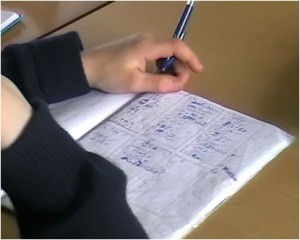(contributor: Eric McAuslan)
How does Eric use maintenance routines to help his students develop their understanding of algebra?
Because I teach the lowest ability group of students, an important focus for my teaching is the regular maintenance of prerequisite knowledge. My regular maintenance routine includes review of past topics, revision of recent material, and the introduction of new content. A sample of questions I have used with my lower ability Year 9 class is presented below.
- An example of Eric’s maintenance questions
4.041 An example of Eric’s maintenance questions
Why These Questions?
Typically, my maintenance routine consists of 10 questions that I present to my students each day at the beginning of our lessons. I monitor my students’ progress and adjust the questions as needed. Some of the questions I present are for maintaining skills, whereas others I choose strategically to develop my students’ understanding of Number that they can later transfer and generalise to Algebra.
Four of the questions (i.e. 2, 3, 5, and 7) I have put into this list are there solely to help my students to remember and maintain their fluency with the important skills and knowledge that they have mastered. I always include several straight forward questions to help my students develop their confidence to use their skills without any “tricks” or subtle challenges in these questions. The other six questions in this list review recent material and lay the groundwork for the next topic. My thinking about each one of them is explained below.
Question 1. (25 x 47 x 4) I designed this question to help my students understand that order doesn’t matter when numbers are multiplied. This type of question is intended to give my students experiences with the associative law of multiplication. I have extended this type of question to include explorations of place value with larger whole numbers (such as 250 x 53 x 4) and decimals (such as 4 x 65 x 2.5, or 1.25 x 7.4 x 8).
Question 4. (476 – 297) I chose this question because it helps my students to look at decomposition. In this question, I encourage my student to look at 476 – 297 as 476 – 300 + 3. This counting strategy is later developed into the idea that 476 – 297 is equal to 476 – (300-3).
Question 6. (Estimate 24.84 x 41.3 ÷ 19.076) I choose questions like this one to reinforce my students’ estimation skills. Unfortunately, most of my students want to work out an exact answer. So to deal with their desire for exactness, I increased the level of difficulty by adding decimal places to the numbers until they were willing to “do the problem in their head” which is my definition of an estimate.
Question 8. (Solve 3x + 4 = 22) While this type of problem can be used for straight forward maintenance, I also extend these questions to allow my students to experience statements with unknowns in both expressions, fractional and decimal coefficients, and statements with fractional solutions.
Question 9. (Simplify 3a + 4 + 2a – 3) First, I begin with collecting like terms with whole number solutions. Only when my students are very confident with collecting like terms do I introduce integers. I have learned to be very careful with how I place of negative terms. These types of questions can become extremely challenging for my students if I change too many parts of the statement at one time. I have extended these types of questions to include examples such as 3(m + 5), 4(2n – 3), 3(p + 6) – 4.
Question 10. (If it takes 8 men 3 days to paint a fence, how long would it take 6 men?) This type of question is a problem solving exercise that is not directly linked to topics that I have previous taught my student. This type of question is designed to encourage my students to solve the problem using proportional thinking. I vary these proportional thinking type questions to include contexts of speed, distance, time and create questions such as “If train travels at 120 kilometres per hour, how far will it travel in 2 hours 30 min?”
How does Eric change the questions?
I change only one feature of the questions each day, so my students become accustomed to the questions. I ask my students to write their answers on the board when maintenance time concludes. With my students, we discuss the solutions that were offered for each question. I am careful to use correct language and notation during this discussion. For example, I will correct a student who says, “one point twenty-five” suggest that, “one point two five” is said instead. I also take the time have discussions with my students about how the concepts addressed by the maintenance questions can be applied to solve problems in other contexts.
What might Eric’s Maintenance Questions look like the next day?
A possible set of questions I could use with my students for the following day’s maintenance activity is listed below.
- An example of Eric’s maintenance questions the next day
4.041 An example of Eric’s maintenance questions the next day
Over time, using this technique, I have noticed that my students consolidate their number knowledge. I have noticed that they discuss their solutions to problems and these new skills become knowledge for their TOOLBOX.
When I develop a set of maintenance questions I am careful to emphasise only certain key words so that my students become confident in using mathematical language and can add specific words to their TOOLBOX. The mathematical language I use includes key words such as simplify, solve, calculate, round and estimate. The word estimate, in particular, is a word my students struggle to understand and use correctly because they seem to always want calculate exactly no matter how complex the question looks.




